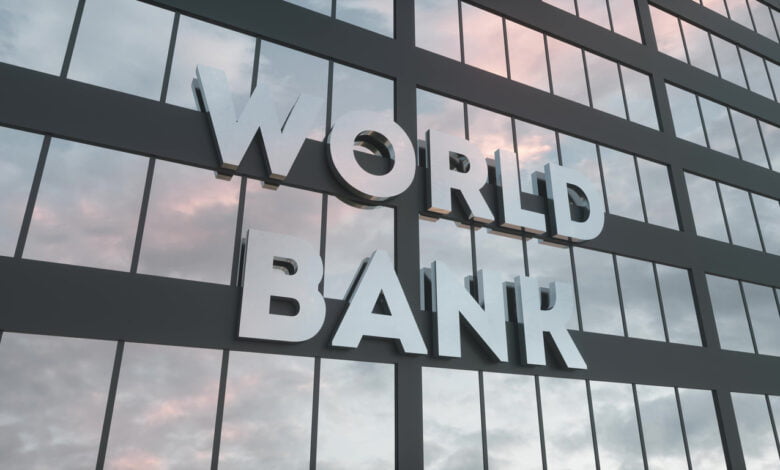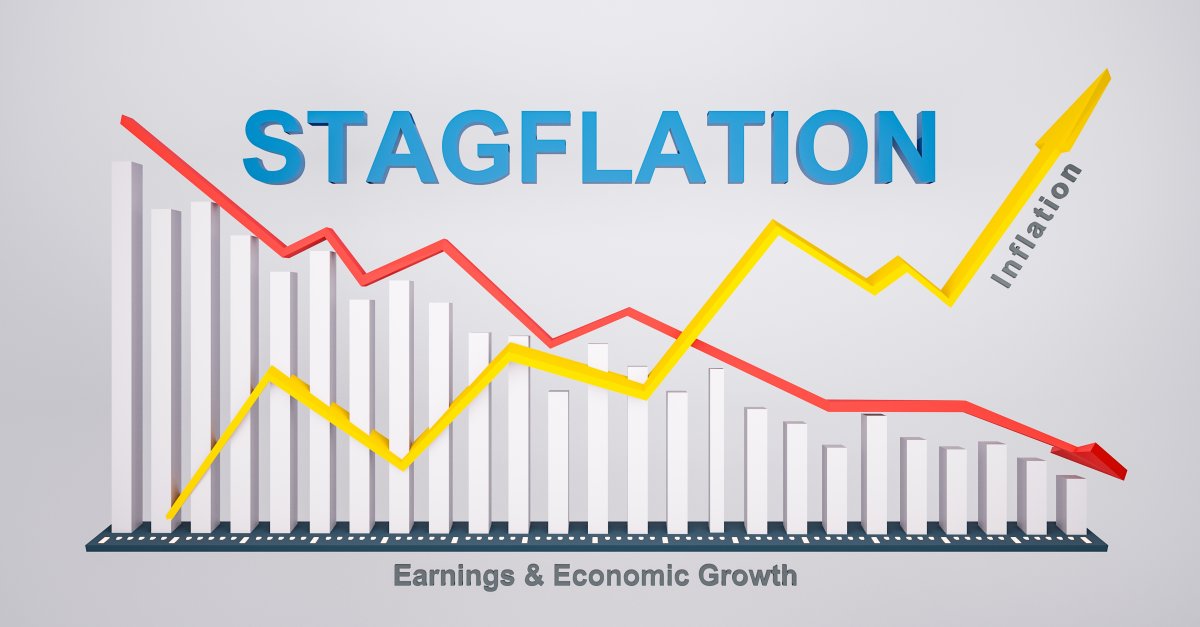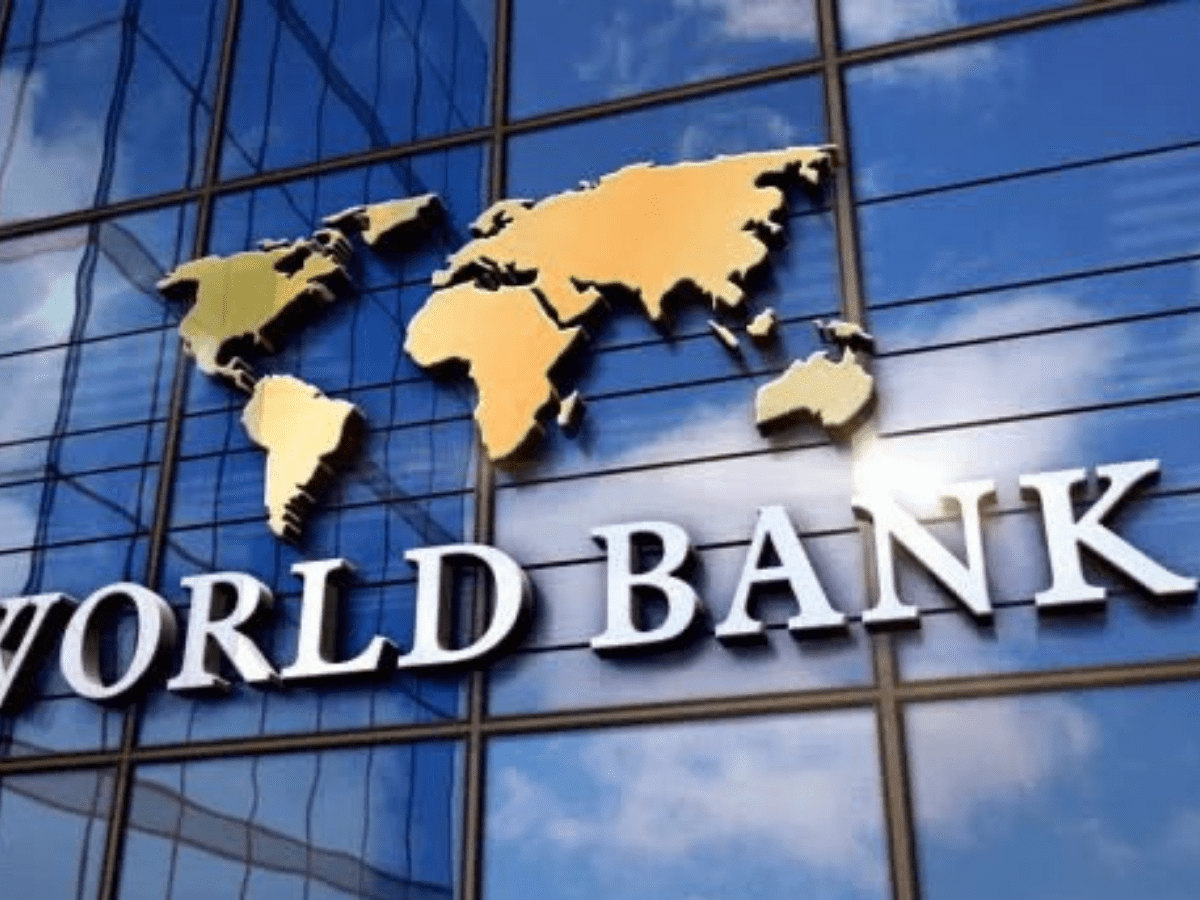Stagflation is forecasted by the World Bank

The World Bank says that countries are headed toward Stagflation.
The world bank on Tuesday slashed that it is a global growth forecast by nearly a third for 2022, warning that Russia’s invasion of Ukraine has compounded the damage from the covid 19 pandemic, raising the risk of global Stagflation.

In its global economic prospects report, the world bank said the war in Ukraine had magnified the slowdown in the global economy, which could soon be facing the painful combination of weak growth and rising prices known as Stagflation, last seen in the 1970s.
The world bank said global growth could fall to 2.1 per cent in 2022 and 1.5 per cent in 2023, driving the per capita growth to zero if downside risks materialized.
Ayan Khos, director of the world bank’s prospects group, warms global economic weakness could lead leads to geopolitical risks “we still see supply distributions of the war those supply distributions, of course, magnified there is risk associated with even larger food prices down the road and when you have these types of challenges the risk of social tension of course increases.”
World Bank president David Malpass said subdued growth persisted throughout the decade, forecasting that between 2021 and 2024, the pace of global change could slow by 2.7 percentage points, more than twice the deceleration seen between 1976 and 1979.

The Report noted that interest rate increases required to control inflation at the end of the 1970s were so steep that they touched off a global Recession in 1982 and a string of financial crises in emerging markets and developing economies. Still, there are similarities to conditions back then. Economists point out significant differences, including the strong balance sheets at major financial institutions.
It is global, but it particularly hits developing countries. There is a lot of inequality in the world, so the advanced economies, particularly the people at the top, have done very well over the last decade. This is a prolonged risk for the world because it is coming off of a shallow period of interest rates, called it Uncharted territory on both fiscal policy which was massively expansionary, and the monetary policy, so we are coming off of that.
We also have demographics that are gradually slowing down in the world. Fewer people are coming into the labour force, so that’s a part of it. Then this core problem of lack of supply and the supply chains not being repaired. Energy is at the core of a lot of the collection. It’s what makes fertilizers, and it’s what makes electricity. As Russia is excluded from this, there is a significant shortfall of energy, and it is not being made up for new supply.
China was the biggest lender during this world expansion, lending to poor and middle-income countries. So one of the concerns right now is our data shows that it is 60 per cent of the either in debt distress now or at high risk of debt distress. Of the 75 poorest countries, the ideal countries of the world, 60 per cent are in debt distress, with a big chunk of that debt owed to China.
So we need to find ways to restructure the debt and make it more transparent. The contrasts that have been written in recent years are collateral clauses with non-disclosure clauses, so for the countries, it is hard to engage in the conversation. I have worked with China to have them engage in the conversation to do the debt restructurings for the countries that need it. Right Now, the distress is spreading to the middle-income countries. There will be more supply in the world, especially in energy.
Many countries Wouldn’t probably see a Recession in this cycle. It has to do with the raw material, energy prices, fertilizers, food, all up, which is a big part of people’s budget. If you think of households around the world, they are feeling the stain. As we already know, two notable differences from the 1970s are significant. One is in those years, the dollars and other currencies were weak. Hence it was fueling the inflation.

Then the banking systems were weak. When we look at this time, we will see weaknesses in different areas from the 1970s, So the way to think of this is just that it was a significant global downturn. This time we see that the world bank had lowered the growth forecast for most of the emerging markets because of the breath of the slowdown.
Many say that the central banks are coming late up to the game regarding inflation. It took people by supposing how high it was, and those numbers are still going on. That combination of the Supply chains also a carryover from the vast government spending that was occurring in 2022 and 2021, so what could be done is to boost the global supplies that are of energy, fertilizers, and food, and that means a concentrated effort by the advance economies and also the developing countries to make more energy and bring it to market.
India at risk of Stagflation?
The world would now seem like a video game. As soon as we beat one difficult level, we are faced with the next impossible one. So far, we have been dealing with two possible demons: Inflation and Recession, but now it turns out we may have to battle a combination of the two; Stagflation.

Both the word world bank and Reserve Bank Of India have now raised concerns about possible Stagflation I’m the coming months. So we are here to take a look at what Stagflation is and how who can tackle it.
Stagflation is the unholy child of Inflation and Recession. It is when growth is declining, and change is still rising. So not only are people losing jobs in this scenario, the world around them is becoming increasingly more unaffordable for them. In short, It is the worst of both worlds and an economic system so scary that economists didn’t even think it was possible.
Technically, inflation happens when there is more money in the economy. More cash equals high prices plus more growth as businesses have more resources to grow their capacity and hire more people. This is precisely why RBI had kept interest rate rates so low for so long despite rising inflation to allow us cheap access to money to grow. But inflation is too high, and we maintain this quote-Unique accommodative stance toward growth.
So along with the RBI, fifty other central banks have raised their interest rates. The world’s most common response to inflation. Usually, when rates are increased, the money supply in the economy is reduced since fewer people want to borrow money at higher speeds to grow their businesses. So prices should go down, but social growth fueled fears of a Recession—a period of low growth when people usually lose jobs.
For the longest time, Economists believed that Recession and Inflation are mutually exclusive. That is, they can not happen simultaneously. By the above logic, their reasoning makes sense. But the real world does not follow our reason and our rules. You can see that inflation can also occur despite less money in the economy. Wait, how? Due to the global events in the 1970s, the US saw Stagflation because of the ban on oil imports to the country from Arab countries. This increases the price of oil, which in turn raises the cost of the other products as well and impacts the country’s growth as well.

Right now, we are also in a Stagflation situation. Thanks to Russia, the Ukraine war, and Lockdowns in China. We see a shortage of multiple critical items, especially oil and food. This is raising Inflation, Despite rising interest rates. Instead, the rising interest rates will impact the growth and lead to job losses, and since shortages spur this inflation, it won’t fully calm down until things are daily. So should we further interest rates? No, because rising interest rates will help calm inflation at least a little, so that’s impossible.
What is Stagflation?
In simple terms, Stagflation is where there is a persistent Combination of Stagnant demand high, Unemployment, and high Inflation in an economy. The shorthand for this combination is known as Stagflation.
The word itself is attributed to a British politician in Mcleod who said in a speech to parliament on the 17th November 1965. “We now have the worst of both worlds, not just inflation on the one side or stagnation on the other but both of them together. We have a sort of Stagflation situation”.
Although first diagnosed in the mid-1960s, it wasn’t until the 1970s that people started to notice that and worry about Stagflation. Before then, there appeared to be a stable long-term relationship between the level of unemployment and the level of inflation. A relationship that was known as the Phillips curve. High inflation means low unemployment; conversely, high unemployment means low inflation. What you didn’t get was high Unemployment and high Inflation. By the 1970s, this relationship has completely broken down.
What Causes Stagflation?
Broadly there are two main explanations. One supply related and one curve associated. The supply shock explanation is the most well-known and in the public’s mind. The cause of Stagflation, this view asserts that the Stagflation was a direct consequence of the 1973 oil crisis. From October 1973, several major oil-producing countries restricted the supply of oil, which in turn made energy much more expensive.
This has not only pushed prices, but firms struggled to adapt to significantly higher energy costs, reduced economic output, and unemployment. The result is Stagflation. This is known as the supply stock argument and occurs when there is a sustainable change in a commodity’s supply central to the economy’s functioning. This, in turn, results in unforeseen equilibrium prices and output changes.
Although this is a part of the story, the reality is that Stagflation started before the 1973 oil shock. Our second Explanation looks at the level of demand in the economy. From the 1960s onwards, the western government increasingly relied on loose financial and monetary policy to fund social programs and, in the case of the USA, an Expensive foreign war in Vietnam.
The role of Monetary Policy is often emphasized here, particularly after 1971, when the US abandoned the gold standard and had much more control over its money supply. The argument is that too much money in the economy chasing too few goods led to rising prices and critically revised public expectations about future inflation levels.
With the high public expectations of inflation locked in, high inflation becomes a self-fulfilling prophecy. Inflation was high in output and employment, resulting; in stagnation. Ultimately stagnation was overcome by the absence of Significant supply-side shocks. From 1974 onwards, the government tightens control over monetary and fiscal policy in the late 1070s and early 2980s.
The world had seen this before too. During the 1979s Recession, it was a disturbing cocktail of relatively high unemployment, slow or stagnant growth, and high inflation. A stagflationary period also witnessed inflation and a decline in Gross Domestic Product (GDP).
The term was made famous in the 1970s when countries dependent on crude oil needs faced a decision coupled with high inflation. Many developed countries experienced Stagflation with high unemployment rates as a result of an oil stock crisis when the OPEC cartel imposed an embargo against western countries in 1973. The prohibition contributed to an upward spiral in oil prices with global implementations. The price of oil per barrel first doubled and then quadrupled, imposing skyrocketing costs on consumers and structural challenges to the stability of whole national economies.
Stagflation can be the result of supply sort like a rapid oil price increase. Costlier oil makes production more expensive and less profitable, slowing economic growth while raising prices.
Another example of Stagflation is when central banks print currencies which would create inflation as the money supply increases. On the other hand, the government makes policies that harm the industry, which would constrain supply and slow economic growth. An Expansion in Money supply while the store is being constrained can result in Stagflation.
The credit rating agency Fitch rating has said the prospects of prolonged inflation and slower economic growth are rising with the added supply chain risk from sanctions on Russia, China’s pandemic lockdowns, and tightened labour market conditions. Fitch Ratings exposed 12 Indian corporations, including 8 PSUs in the energy and Utility sectors and four private sector firms, to elevated downgrade risk. Under this Stagflation scenery, Fitch assumes the surge in global oil prices will last over a more extended period with average annual expenditures of $150 per barrel in 2022 and $130 in 2023.
Though there is no definitive solution to Stagflation, according to economists, there has to be a rise in production to the level that it leads to high growth when inflation stays the same. When this level is achieved, it will prompt the central banks to tighten their monetary policies to bring down inflation.
Conclusion
However, You don’t need to lose sleep over Stagflation worries just now. The last time Stagflation took place was when the inflation was at 11 per cent, and unemployment was at 33 per cent. We are far from that mark; plus, India is seeing strong growth despite everything. Our credit Dispersal rates are at a two-year high, showing that there’s demand for loans among Bussiness.

Also, our manufacturing purchasing managers index was 54.6 in May, which shows the manufacturing sectors are going strong. The infrastructure sector is also booming. However, consumer demand is drying trade volume for FMGC firms fell by 4.9 per cent due to rising prices which could cause a significant problem for companies, especially as India is said to raise interest rates further.
Edited by Prakriti Arora




